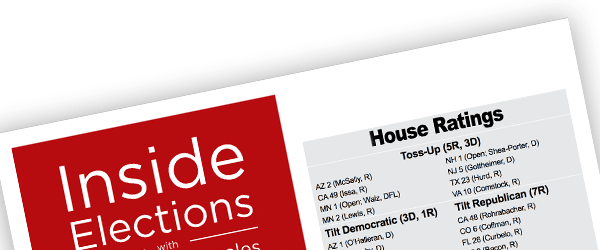Podcast Episode 37: 2024 Election Hits & Misses, Nebraska 2, Online Scams
Nathan Gonzales and Jacob Rubashkin talk about what they got right (and wrong) in the 2024 elections, do a deep dive into one of the most competitive House races in the country and how Rep. Don Bacon was able to survive, and look ahead to the 2026 fight for the Senate including a key race in North Carolina. Nathan also admits he got scammed online looking for some tickets.
Listen to the podcast on Spotify, Apple Podcasts, or Pocket Casts here.
The Inside Elections podcast analyzes congressional, presidential and gubernatorial races in a nonpartisan, data-driven, and accessible way. With a combination of reporting and data, Inside Elections brings valuable context to complex races. Go to InsideElections.com to subscribe to the bi-weekly newsletter through individual subscriptions and group packages that are tailored for association and corporate PACs.

